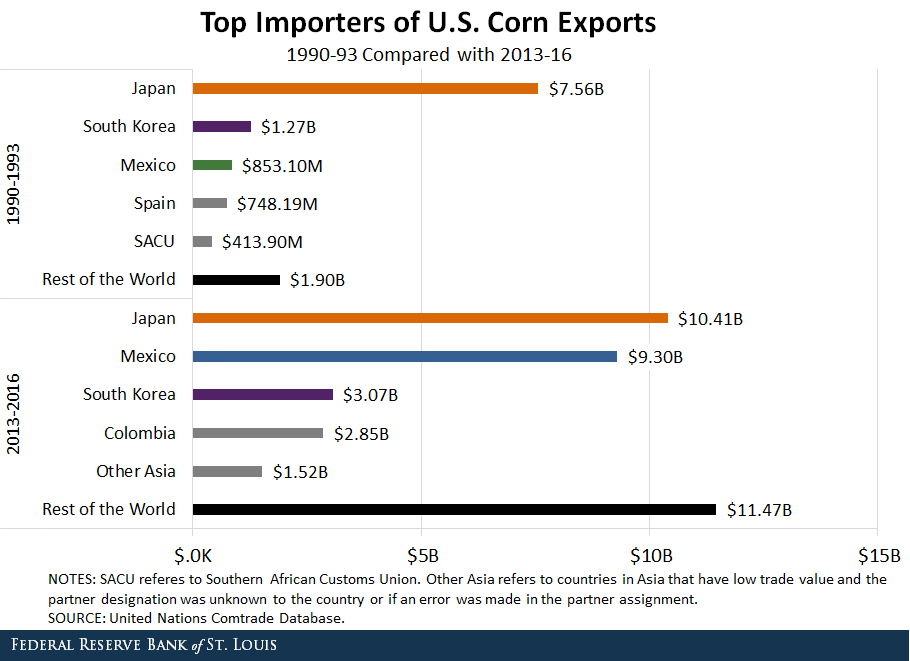from the St Louis Fed
— this post authored by Alexander Monge-Naranjo and Hee Sung Kim
It is well known that the u.s. economy is a major supplier of food products to the world. Not only is the country endowed with fertile lands and natural resources, but it also has the appropriate climate for grains and grass. In addition, it has developed the know-how, equipment, advanced production technologies and skilled workers for key agricultural sectors.

Just in 2016, according to Food and Agriculture Organization Corporate Statistical Database, the U.S. produced:
Where do these agricultural products go? Have there been changes of relevance in the direction of exports?
Patterns in U.S. Soybean, Corn and Wheat Exports
Here, we will review the dramatic changes in the direction of the exports of three of the main agricultural goods produced in the U.S. Our analysis includes the early 1990s – before NAFTA (1994) and way before China joined the World Trade Organization (2001) – and the most recent years.
The figures below show the composition of U.S. exports of soybean, corn and wheat, according to the main destination countries (importers). We show the total value exported by the U.S. for each category during the periods 1990-93 and 2013-16.
In each figure, we single out the top five importers and aggregate the rest in a sixth category: the rest of the world.



Some significant patterns are clearly discernible. For starters, notice that for all three products, the amounts exported are much higher in recent years than two decades prior. Yet, the most interesting changes are in the composition of importers. For the years 1990-93:



